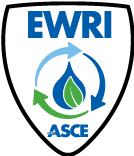Submitted by John Gulliver, Ph.D., P.E., F.ASCE, Andy Erickson, Ph.D., P.E., M.ASCE, James Houle, Ph.D., A.M.ASCE, Tom Ballestero, Ph.D., Seth Brown to the Winter 2025 EWRI Currents.
Stormwater runoff is a significant source of water pollution and a threat to the health of waterways across the country. It is a complicated problem for communities to manage because of the engineering and financial challenges associated with stormwater.
The University of New Hampshire and the University of Minnesota will co-lead the Cold Climate Center of Excellence for Stormwater Infrastructure Technology (CCCESIT), a collaborative effort including the National Municipal Stormwater Alliance and funded by the United States Environmental Protection Agency (EPA) aimed at enhancing efforts to support the nation’s water infrastructure and protect water quality. The center is expected to be funded at $1.5 million per year for five years and is one of the four national stormwater centers along with centers directed by the Center for Watershed Protection, the University of Oklahoma and the Nevada System of Higher Education. The CCCESIT will play an important role in conducting research on new and emerging stormwater control infrastructure technologies. A technical advisory committee will include experts from across the cold climate regions of North America.
Two initial CCCESIT research projects will be biofiltration (rain garden) media improvement to retain pollutants and road salt reduction strategies. CCCESIT’s work will also include technical assistance and education for stormwater researchers in both the public and private sectors as well as the greater community. The center will provide webinars, workshops, and training.
“Stormwater causes flooding in our streets and ditches, and contributes pollution to our lakes and rivers,” said Andy Erickson, research manager at the University of Minnesota’s St. Anthony Falls Laboratory and co-director of CCCESIT. “In cold climates, like Minnesota, this problem is exacerbated by spring snowmelt, freeze/thaw cycles, and road salt. We are building a team of national stormwater experts that live in our neighborhoods and experience these challenges with the rest of us. We will conduct state-of-the-science research to tackle and overcome these challenges together.”
Read more about the new Centers of Excellence for Stormwater Control Infrastructure Technologies on the U.S. Environmental Protection Agency’s website.


